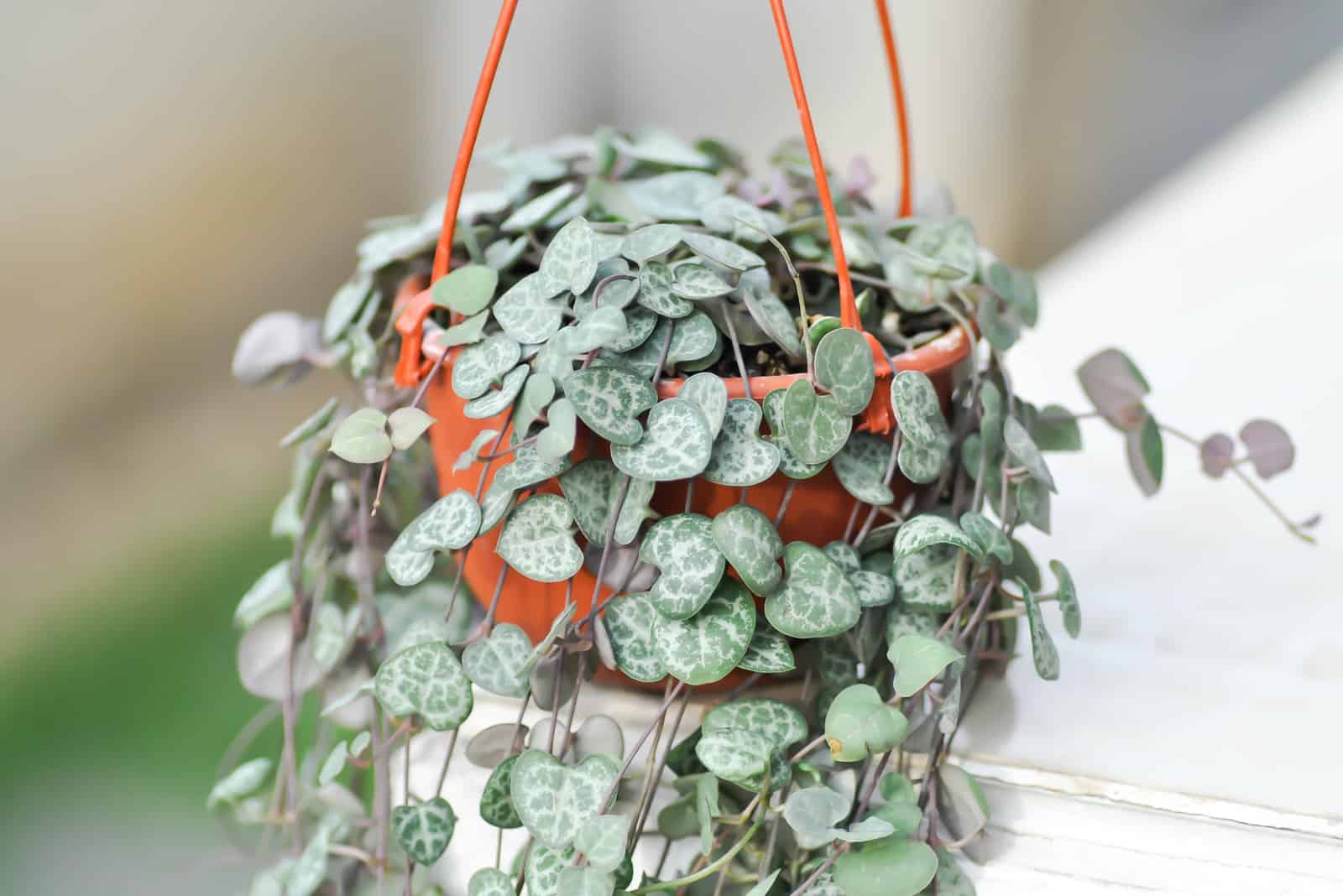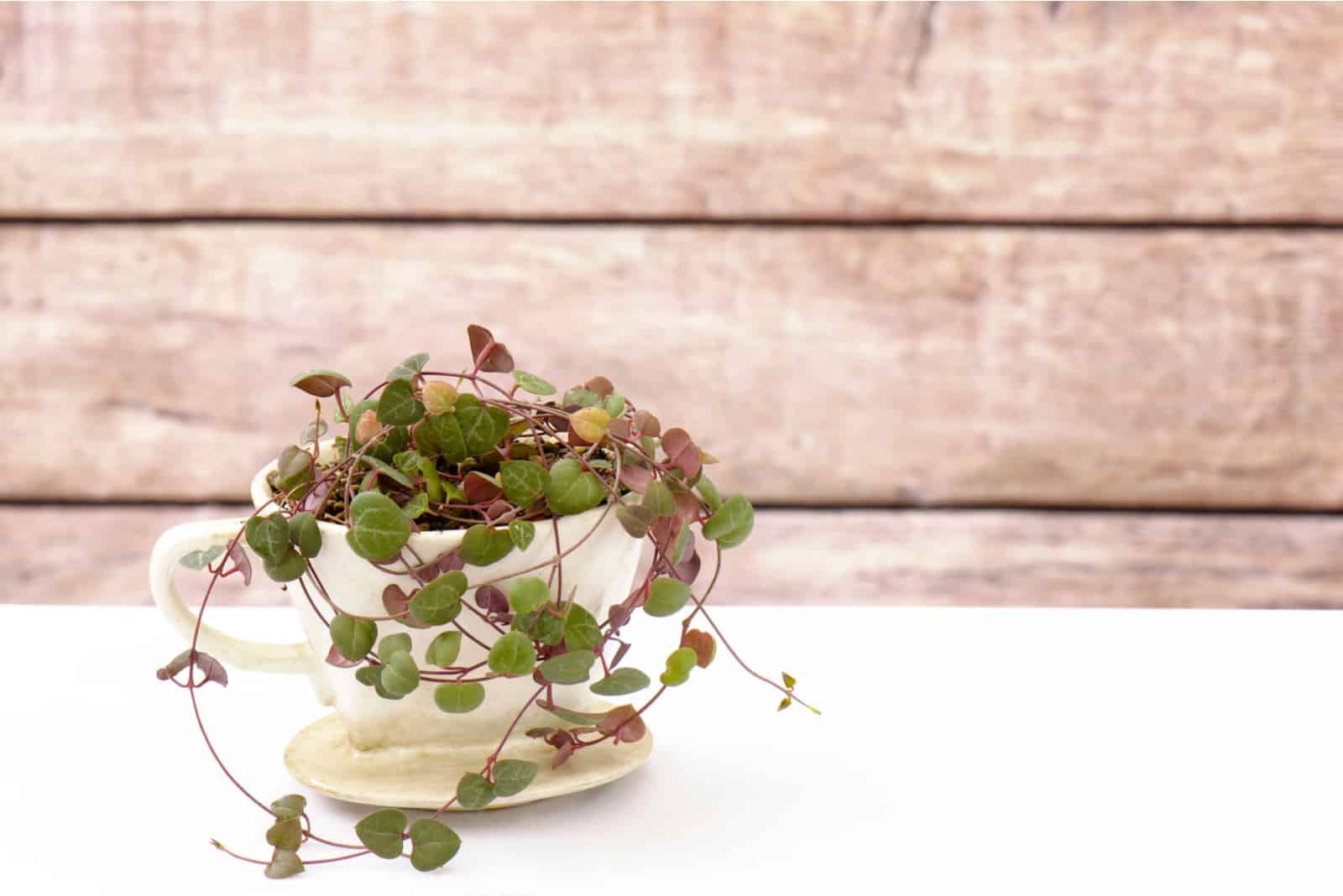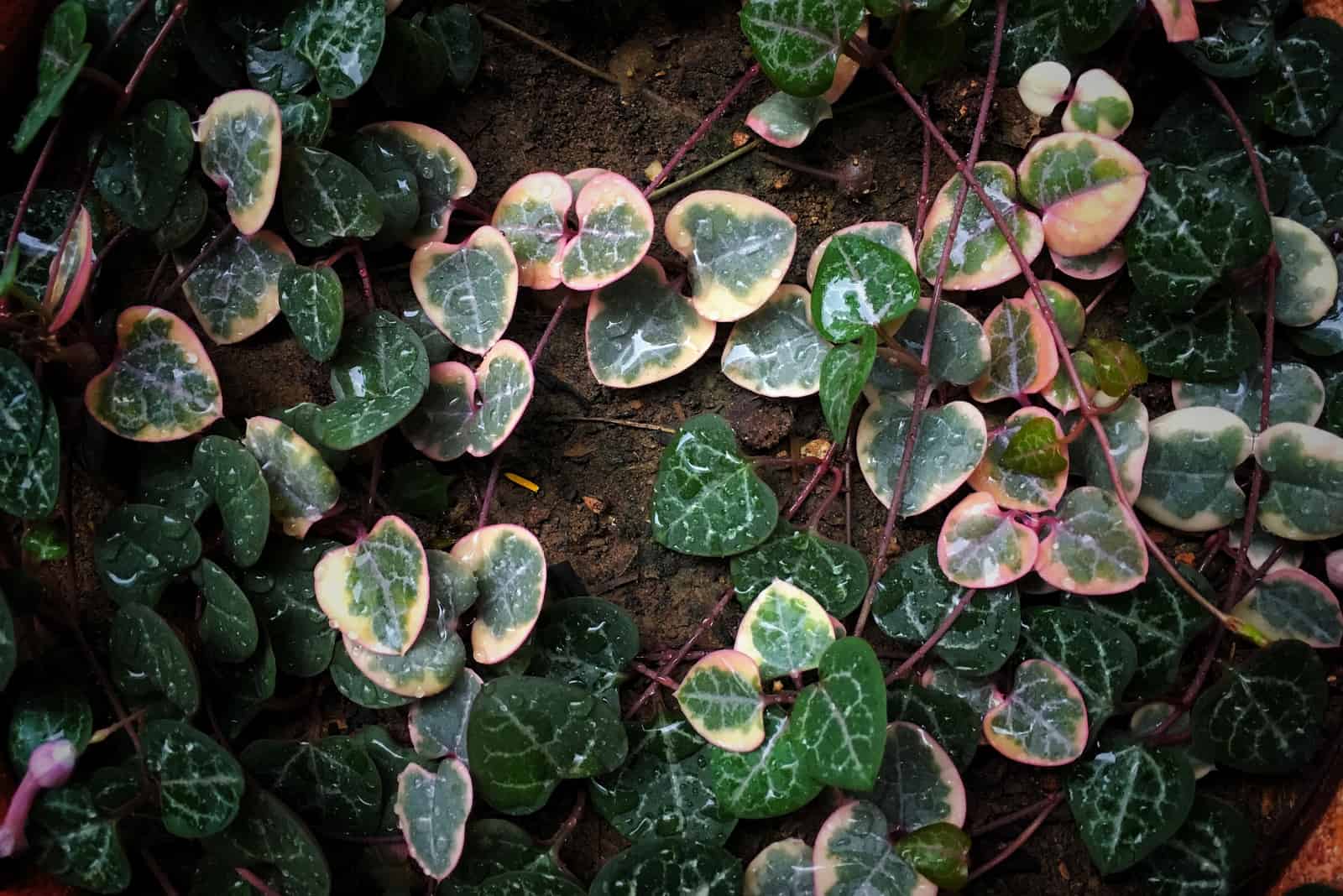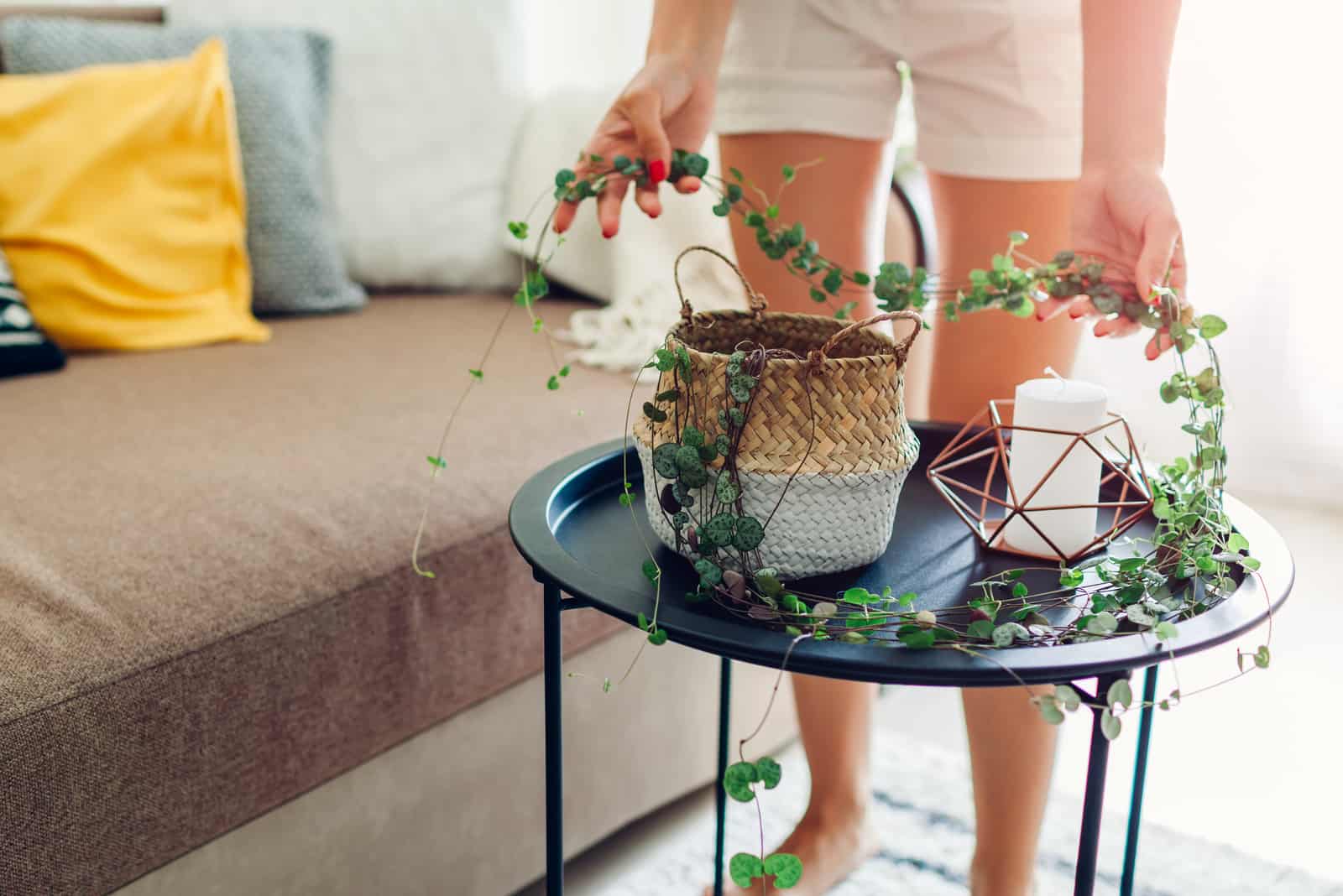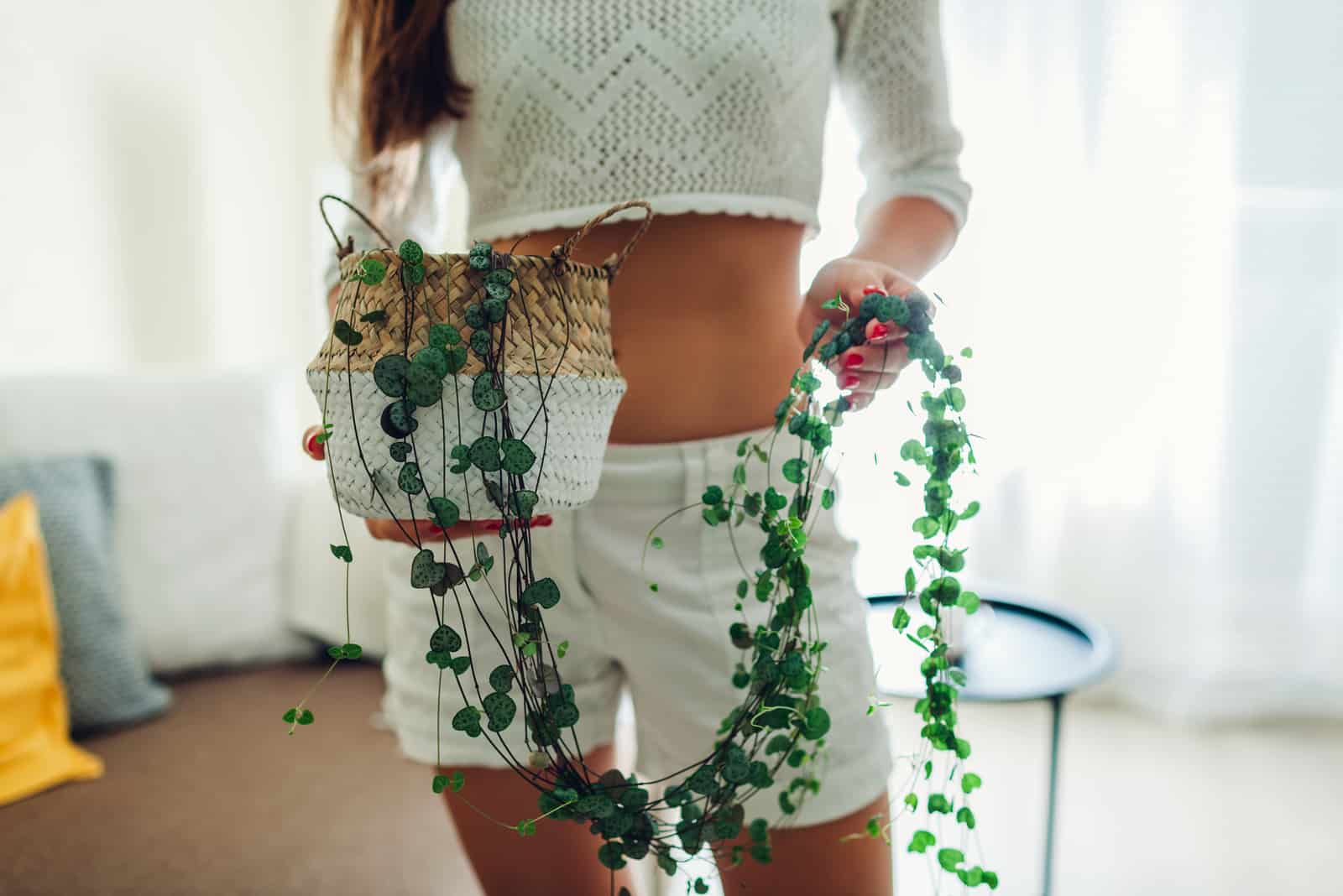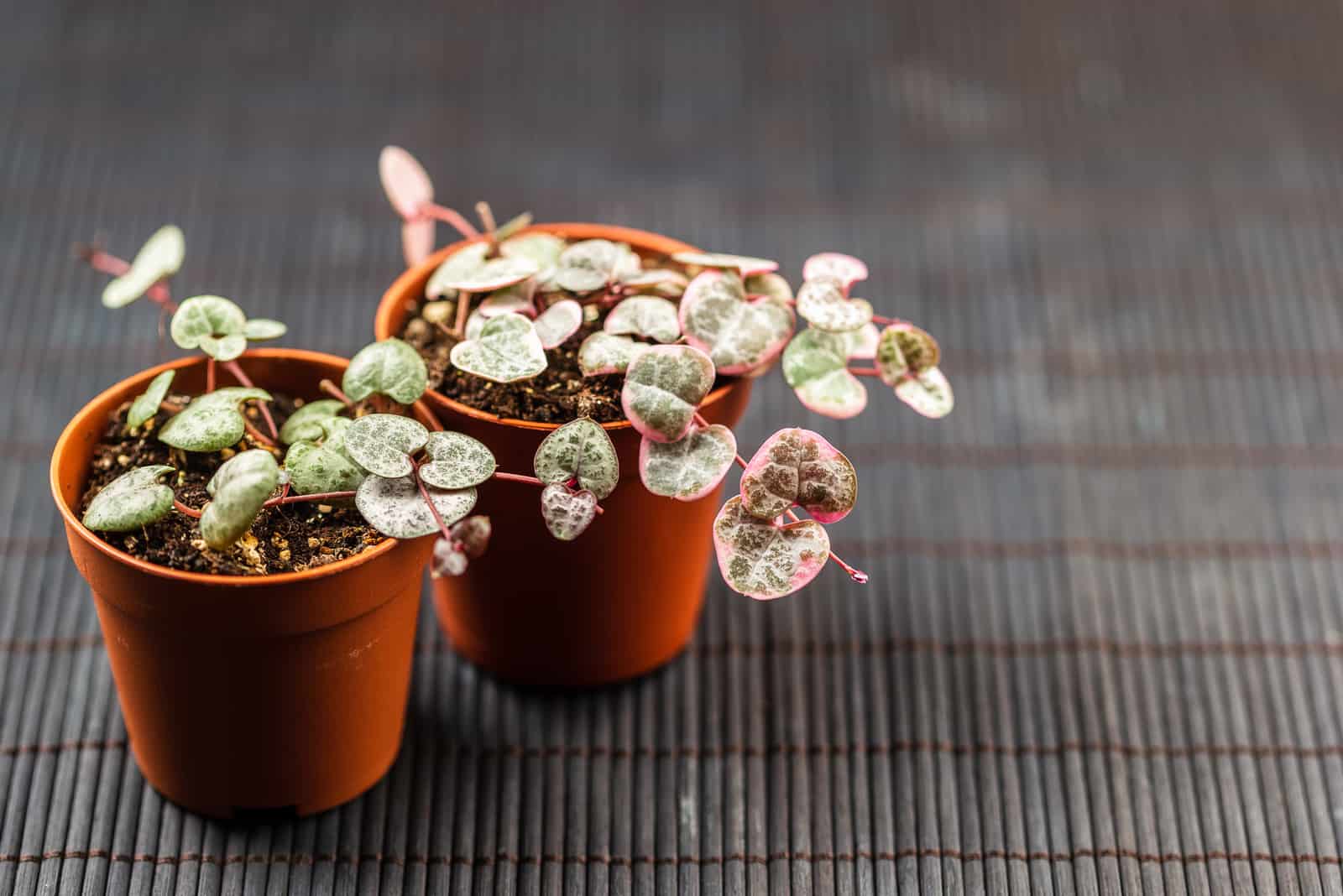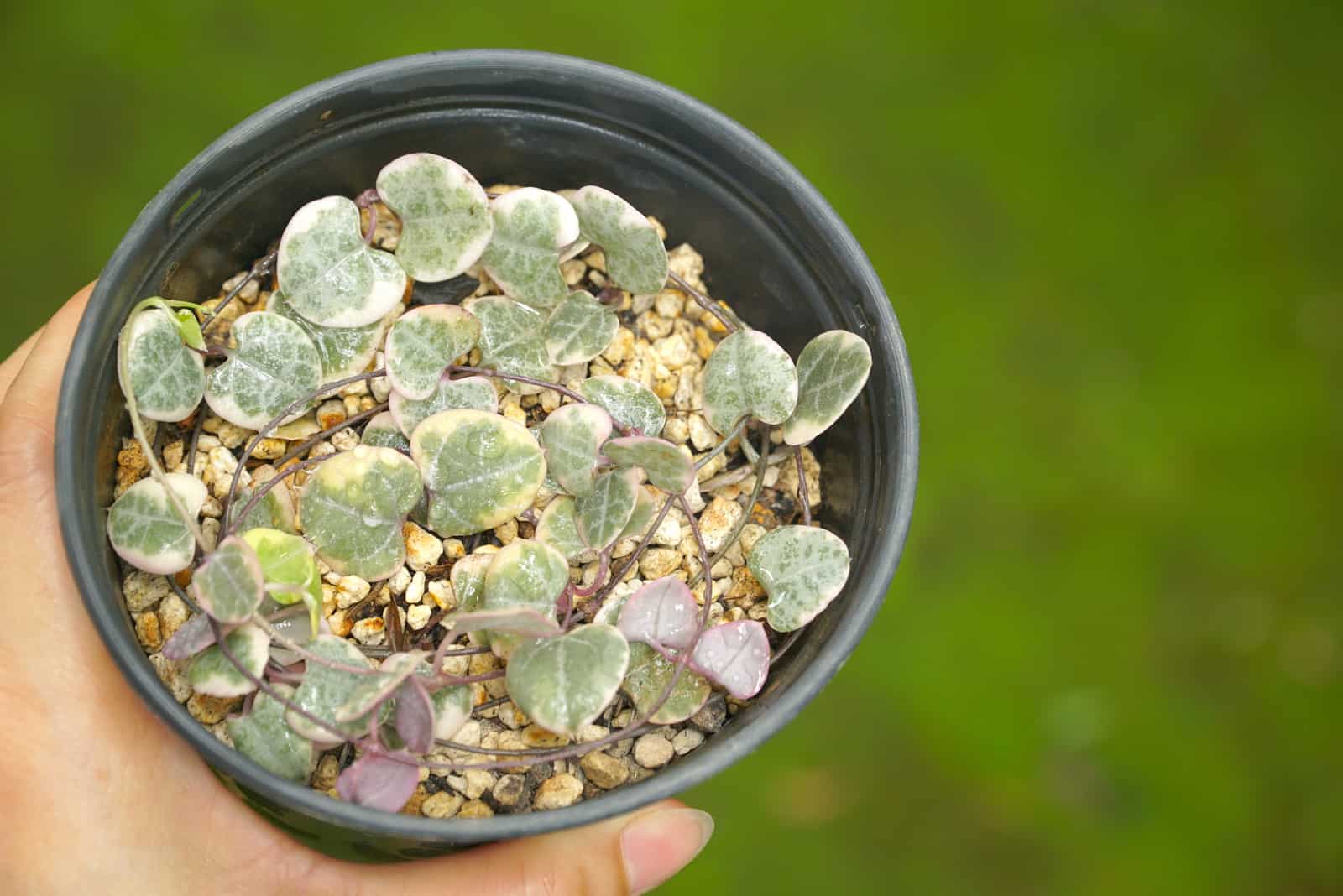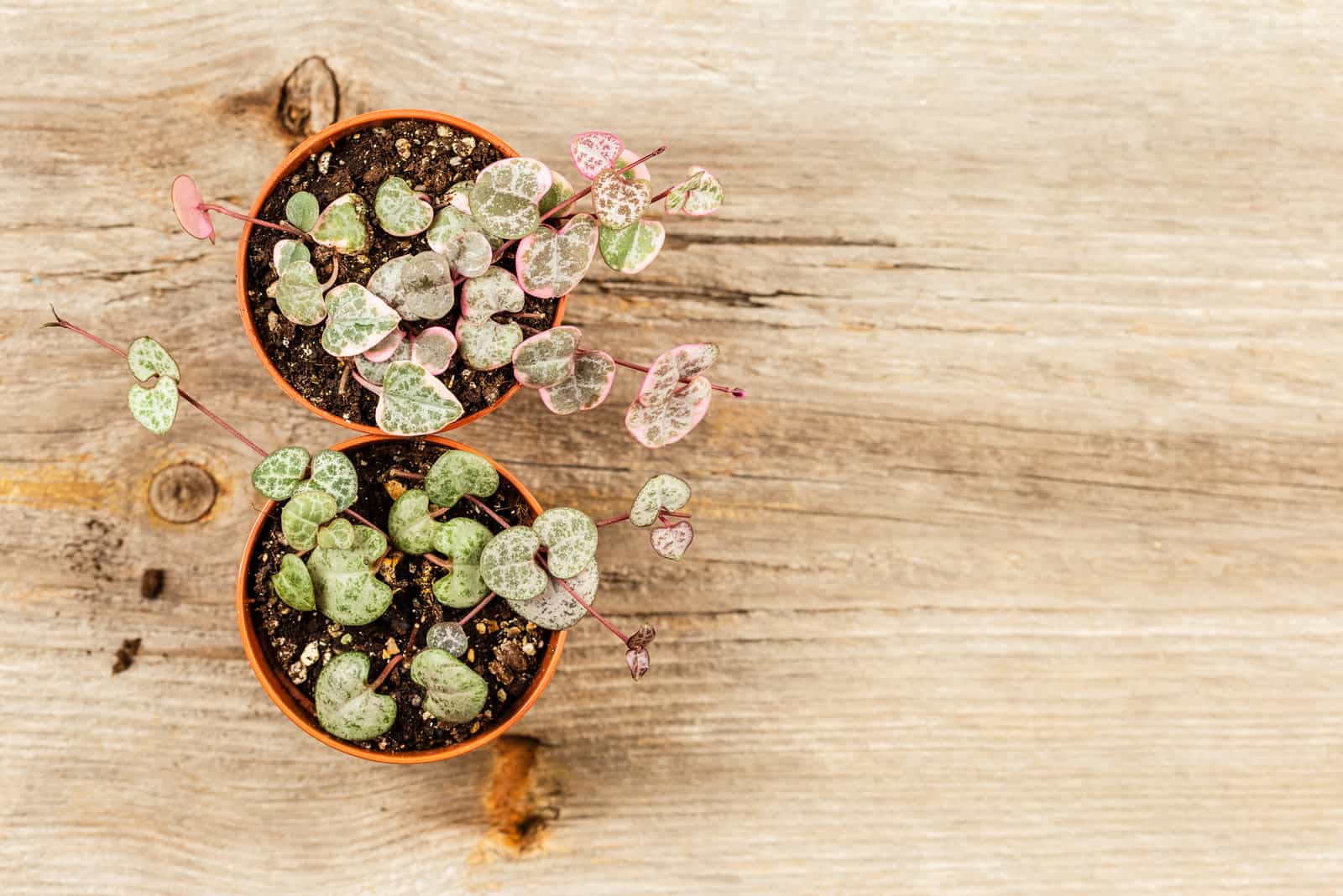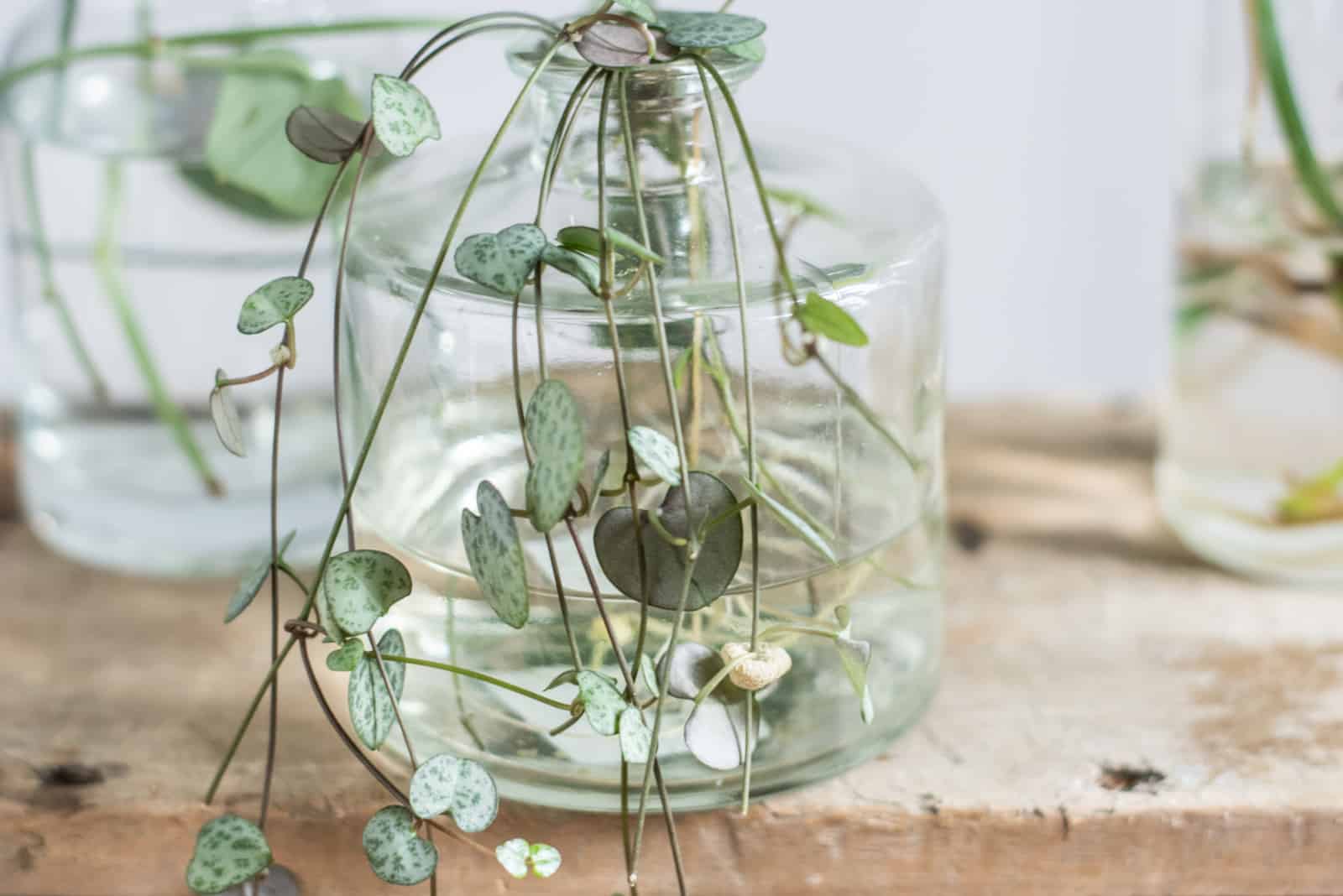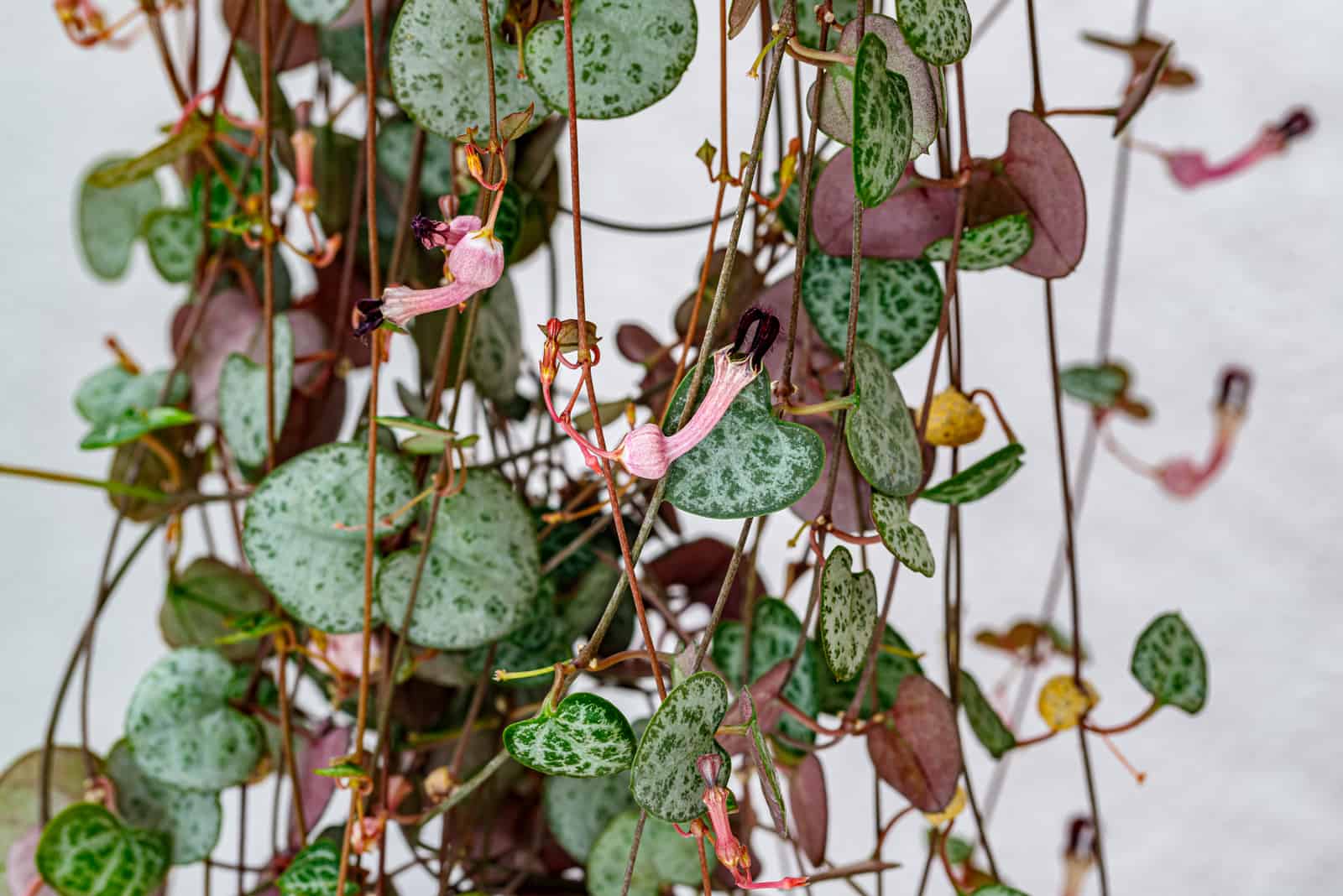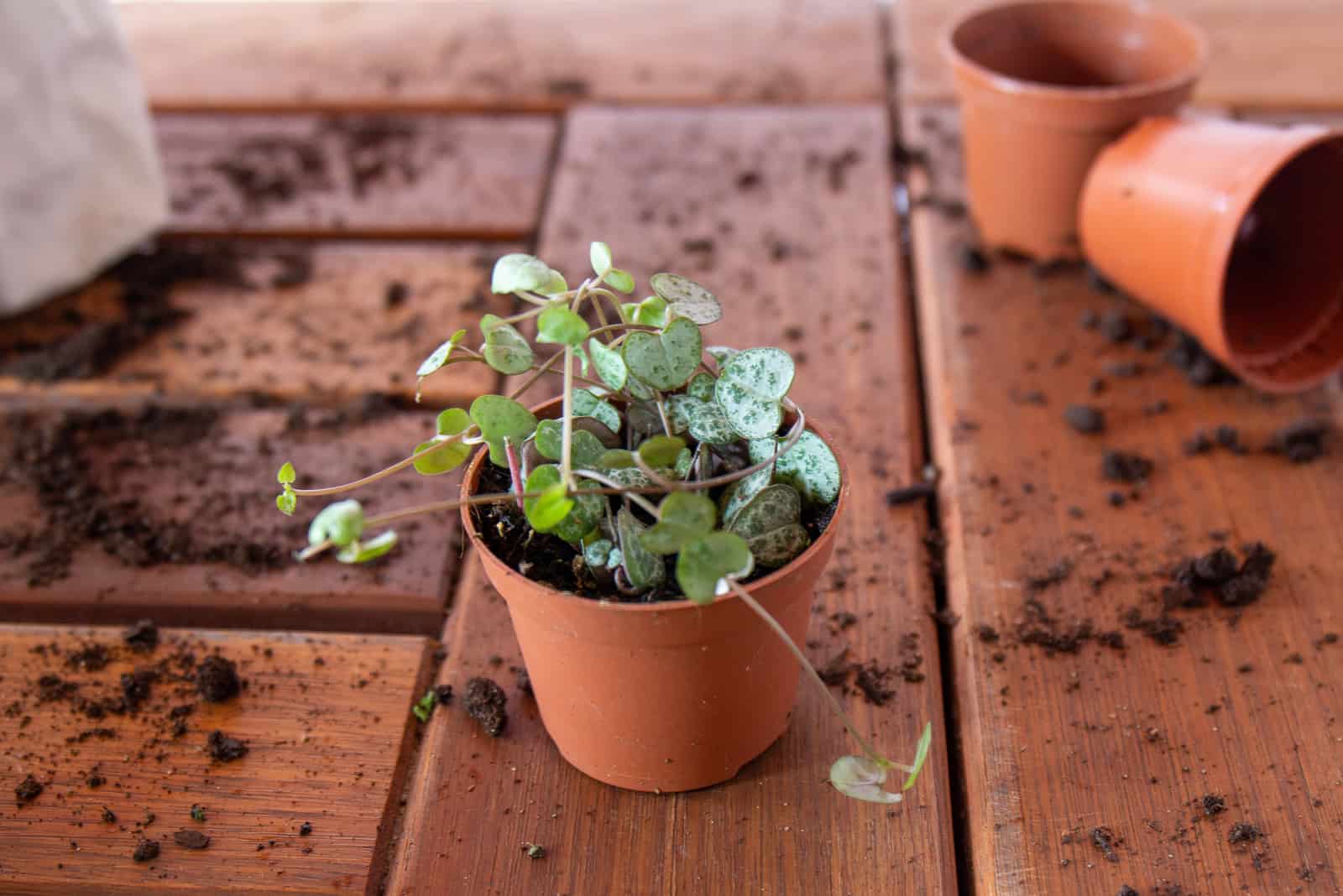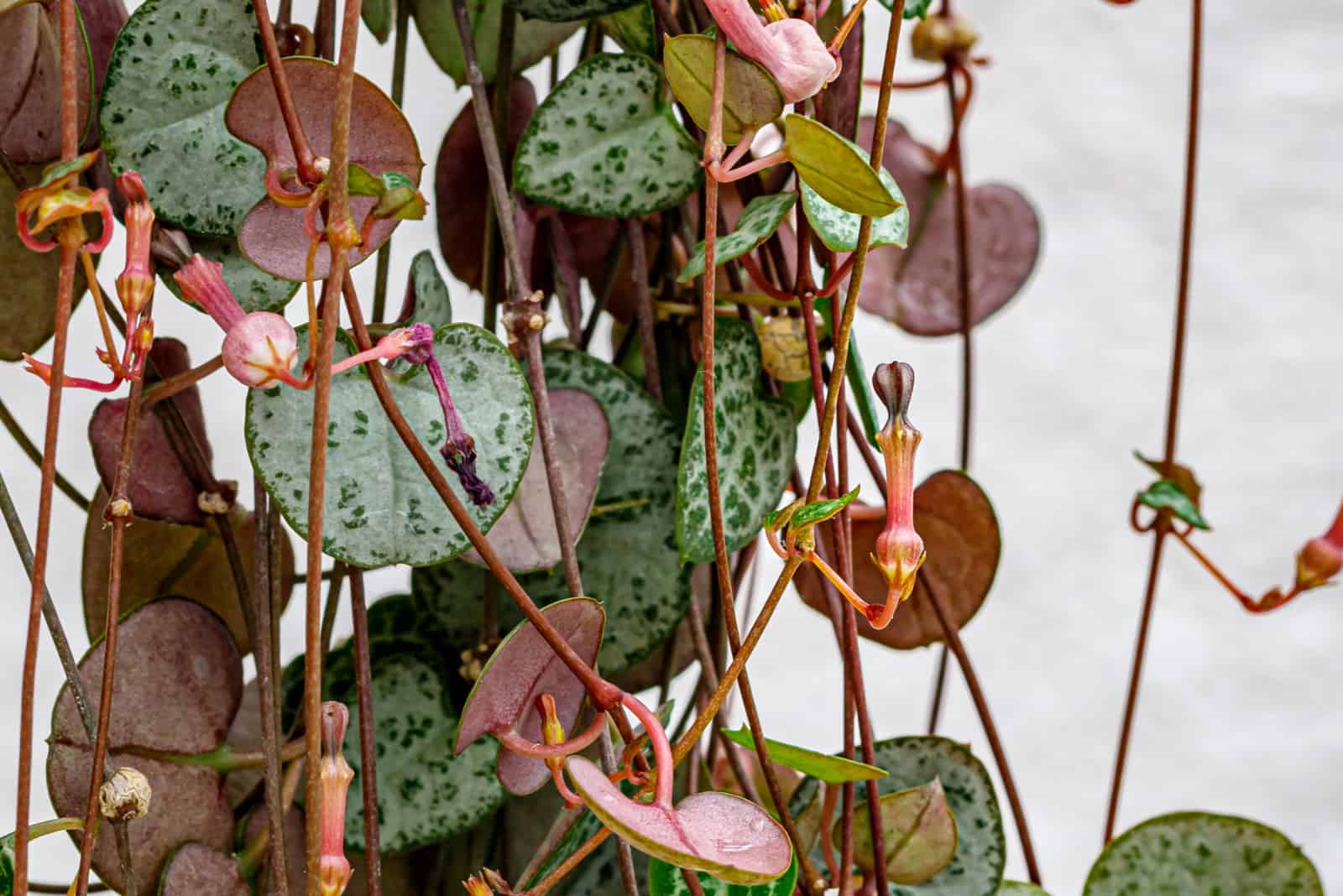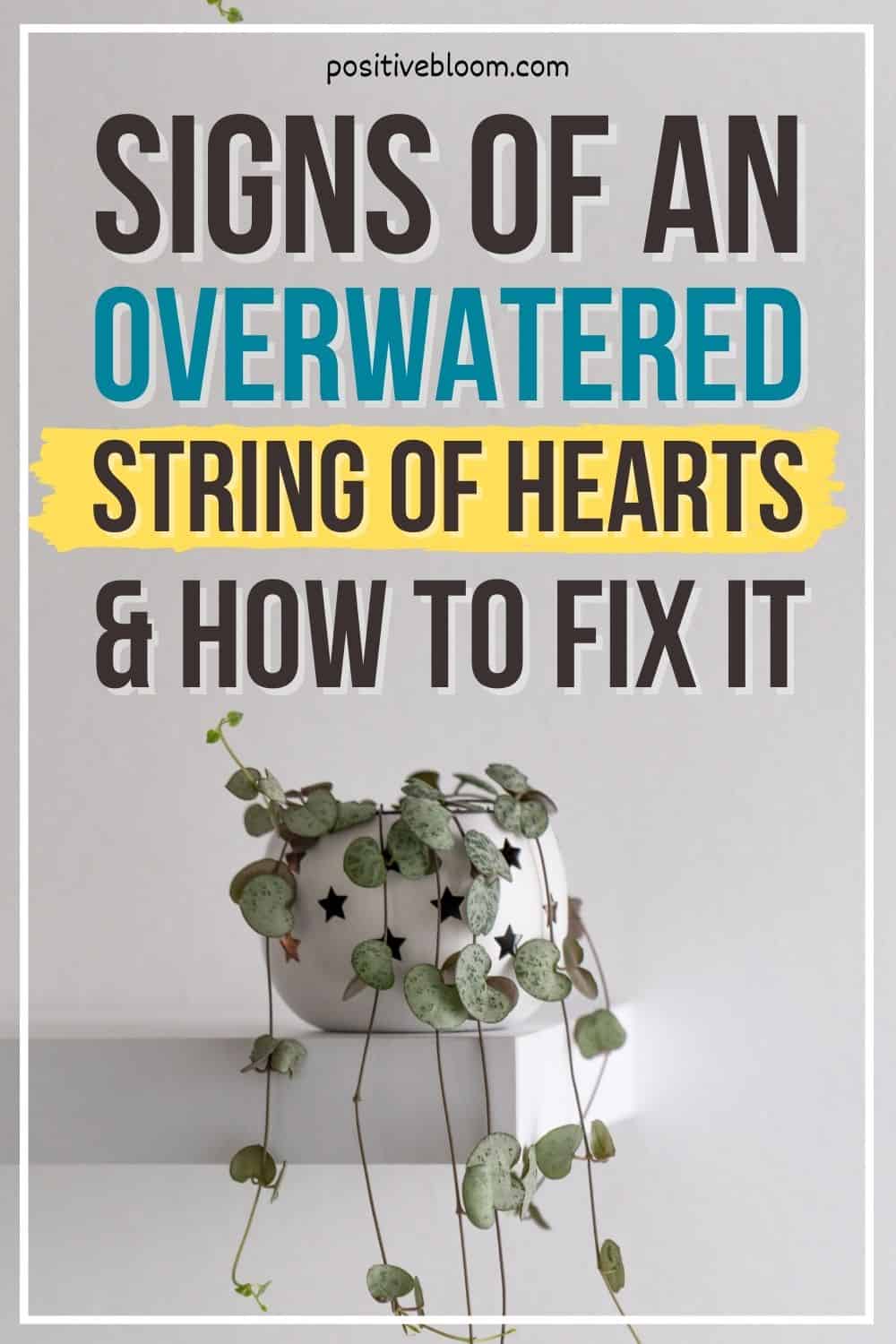The String Of Hearts Plant is a succulent-like trailing houseplant. From my own experience, it’s an easy-to-grow indoor plant.
However, some problems can occur with it, and most of them are closely connected to watering. I know how much you care for your plants, but sometimes it’s hard to keep everything under control.
The watering schedule depends on many factors, so we often make mistakes. Unfortunately, it’s easy to overwater this plant, but all is not lost if you act on time!
First, you need to identify if overwatering is the cause of your plant’s issues. I have listed the four signs of an overwatered string of hearts in this article. I’ll also show you how to revive the plant.
You will be able to work out what you have been doing wrong when watering and how to fix it once you’ve read this article.
Let’s look at everything you need to know, including how to care for this plant in general!
What Does An Overwatered String Of Hearts Look Like?
Before you do anything else, you have to determine what’s causing the changes in your plant’s appearance.
As with every other houseplant, the string of hearts will first show changes in the leaves. After that, you’ll have to dig deeper (literally, you’ll need to do some digging!).
The longer you wait, the more signs will occur, and your plant will likely die in the end.
Let’s look at the signs to watch out for!
Leaves Turn Yellow
The string of hearts’ leaves are very delicate, and are the first thing to show signs that something is wrong.
If your plant’s leaves turn yellow, it’s likely that your plant is overwatered.
There are other causes of leaves yellowing. Yellow leaves might also occur when the plant is underwatered. It is essential to determine the cause, as the sooner you identify it, the faster you can react.
Why do leaves turn yellow when the plant is overwatered? Overwatering causes nutrient deficiency in the root system, and iron deficiency in particular.
If you water the soil too much, the nutrients will be washed away.
The plant needs further observation in this case.
Leaves Wilting
If you didn’t react to the yellow leaves in time, this is the next phase of changes, and probably the last one before death.
Why does this happen? Excess water in the soil will suffocate your string of hearts. In other words, the excess water disrupts the airflow in the root system. It lowers the oxygen in the root system, and so the plant is unable to breathe.
The leaves lose their strength (the whole plant in general), and eventually wilt. Unfortunately, the plant is probably dead in this scenario.
Root Rot
The string of hearts plant shares many features with succulent plants. As you may know, succulents are susceptible to root rot.
When the soil gets waterlogged, aeration in the root system is disrupted, making the plant prone to pathogens, mainly fungi. The problem with fungi is that it decomposes the root tissue and spreads very fast, causing the leaves to turn yellow.
It’s hard to spot this sign as it’s impossible to take the plant out of the pot every time you’re worried about something. Yellow leaves are a green light to inspect the plant further.
There is one more method I use for detecting if there’s something wrong with the roots: when I notice yellow leaves and wet soil, I get closer to the soil and simply smell it.
The soil will have an unpleasant smell and look mushy if it has root rot.
I suggest you act as soon as possible in this case, as the roots are fundamental for the health of the entire plant.
If the plant is overwatered, the roots will be mushy (instead of firm), rotting, and discolored (brown instead of white).
Edema
The primary function of the string of hearts’ leaves is to transpire water from the root system. In waterlogged soil, the plant’s roots take up more water than the leaves can transpire.
This disorder is called edema, and it causes spots to burst on the leaves.
To determine if your plant is suffering from edema, you should search for black or brown spots on the string of hearts’ leaves.
Ceropegia woodii (the scientific name for a string of hearts) has many succulent features. Succulents are the most common plants affected by edema.
Not all is lost if this happens! Let’s find out how to save your precious houseplant!
How To Save Overwatered String Of Hearts
There are two things you can do to save your string of hearts.
The first is repotting.
I must mention that repotting is possible only if the plant hasn’t suffered severe damage. In this case, you can only propagate the plant, which is the second way to save it.
Repotting is a great way to save a plant with less than severe damage. Although some say it’s complicated, it can be done successfully and relatively quickly if you follow our steps for repotting.
Let’s learn how to repot a chain of hearts (the common name for a string of hearts).
Repotting
There are several things you have to pay attention to when repotting.
Move The Plant
Why move the plant before repotting? The answer is simple: it has to dry (you don’t want mushy and smelly soil all over your desk and on your hands).
Although it may sound tempting, you should never leave a string of hearts plant exposed to direct sun, as this will make it dry out. I learned this the hard way!
It will cause even more damage as the plant will suffer temperature shock.
Move the string of hearts to a place out of direct sunlight.
Take The Plant Out Of The Pot
It’s time to take the string of hearts plant out of the pot. Don’t grab the plant roughly as this can damage the leaves. Using your hand, gently grasp the plant’s base at the topsoil. Using the other hand, turn the pot upside down.
Gravity will do the rest.
Loosen The Roots
Loosen the roots to get rid of any excess soil. This will help you to see the damaged roots.
Apply fungicide to the entire root system. Sterilize the pruners or scissors you’re using and cut the affected roots and vines.
If you look closer, you will notice white bulbs. These are called aerial tubers, and they develop the vines.
Allow The Roots To Dry
After you cut the damaged roots, the healthy ones need to dry up. Once again, don’t expose them to direct sun as it will cause more damage.
Depending on how much water is in the roots, they may have to dry for a few hours.
New Potting Soil
I suggest you use fresh soil for each repotting as it will have more nutrients. This will prevent spreading the fungi.
However, if the topsoil is suffering from fungal infection, you can disinfect it in the oven.
If you decide on a new potting mix, I suggest cacti or succulent mix. If you can’t find these, purchase any mix and add coarse sand or perlite to improve drainage (these two ingredients are very important).
Improve Drainage
A good potting mix should have good drainage, and you can improve drainage by purchasing a pot with drainage holes.
Drainage holes will get rid of the excess water in the soil, help the soil dry, and reduce the chance of overwatering.
Alternatively, you can put a pebble tray below the pot to keep the excess water away from the roots.
Put Your String Of Hearts In The Pot
Once you’ve removed the damaged roots and the healthy ones have dried up, fill a new pot (or disinfect the old one) with the potting mix. Fill the pot with 3/4 of the potting mix and leave 1/4 of the mix for covering.
Put the tubers in the middle of the potting soil and cover them up with the rest of the potting mix.
Gently press the soil down around the tubers.
Wet The Soil
After repotting, regularly water the plant.
The best time for repotting this plant is in the spring (if you are repotting a healthy plant). If you repot during dormancy, it can stunt the plant’s growth.
Here’s a video:
How To Propagate An Overwatered String Of Hearts
If your chain of hearts plant has suffered severe damage, you need to propagate. The method shown below can be used for propagation in general.
You can use it to save your plant or if you want more string of hearts plants.
You’ll need tubers and vines (if the plant is dying, choose only healthy tubers and vines).
There are a couple of ways to propagate the ceropegia woodii.
I must remind you that it’s best to propagate the plant during the growing season (springtime).
Read on to learn about both methods so you can choose which one is best for you.
Soil Propagation
When it comes to soil propagation, you can use either tubers or vines.
Propagation By Vines In Soil
• Prepare an airy soil mix (shown above) and place it in a pot or tray.
• Select healthy vines and make sure that each one has a node attached to it.
• Place the vines with nodes in the potting mix. They should stand firm. You can use a wooden stick to support them as you don’t want them to move around.
• Avoid planting leaves in the soil. They will decay and stunt the growth of the new plant, or maybe even destroy the process entirely.
• Slightly water the new soil to make it moist. You don’t want to overwater the plant.
• After about a month, new growth will occur.
• Plant the string of hearts’ babies into succulent soil.
• Water the plant thoroughly and enjoy the new growth.
Propagation By Tubers In Soil
You can also propagate the string of hearts in soil by using tubers (vines with tubers).
• Select white tubers and then cut the vines with tubers.
• Place the tubers in the potting mix (you can use the old one, but make sure it’s sterilized).
• Slightly water the new soil to moisten it. You don’t want to overwater the plant.
• Place the potting soil in bright indirect light. After about a month, new growth will occur.
• When you notice roots on the tubers, you can cut off the vines.
• Place the roots in succulent soil.
• Fertilize regularly to see the plant thrive.
Water Propagation
You may be wondering why we’re doing anything with water if the plant is easy to overwater?
Don’t worry, this is a perfectly safe and successful propagation method. If you follow the steps below, you will get a new plant without issue, I promise.
For propagation of string of hearts in water by vines, follow these steps:
• Select and cut off a couple of healthy vines and remove any leaves.
• Fill a jar with water and put a plastic cover over it. Make some holes in the plastic cover.
• Place the vines in the holes of the plastic cover.
• Put the jar in some indirect light to encourage growth.
• After about a month, new growth will occur.
• Put succulent soil in a pot and plant the vines with roots.
• Water the new plant and fertilize regularly to see the plant thrive.
How To Water String Of Hearts
We have now seen how many issues can be caused by mistakes when watering this plant.
I have to mention that the watering schedule of any plant can’t just be followed blindly. Many factors affect how frequently you should water. The way you water also matters (this sounds strange, but trust me, it’s true).
Let’s find out more!
When To Water
Like succulents, a string of hearts isn’t too demanding when it comes to the watering schedule. In my opinion, it’s always better to wait than to overwater.
The best idea would be to water the plant twice a month (this is a great plant for forgetful people).
The chain of hearts plant goes through its dormancy period during winter. Cut watering in half during these months.
Why is this plant so easy to overwater in general? The string of hearts plants store water in their leaves and roots and save some for later. These plants grow healthy even if unwatered for extended periods.
This means that if you keep watering this plant, it won’t be able to save all that excess water. Instead, it will show the various signs of overwatering we discussed earlier.
How To Water The String Of Hearts
You may have seen people watering their plants from either above or below.
When you water plants from the top of the soil, the water goes to the bottom. Therefore, the soil is soaked until excess water goes through the drainage holes.
On the other hand, when you water the plant from below, the soil gradually absorbs the water until it reaches its capacity.
I suggest you water your string of hearts from the bottom. This way, the soil will absorb as much water as it needs, and if there’s any excess water, it will drain fast.
Slowly but safely, as I always say!
Quality Of Water
Can you believe that the type of water you use plays an essential role in watering?
How come? As the water in some places contains higher levels of chlorine and fluorine, your plant’s growth may suffer as a result.
The best idea is to use filtered water or rainwater, and I suggest you avoid water softeners altogether.
I fill a bucket with water and leave it for several days. This way, the chlorine and fluoride concentration reduces and the water is perfectly safe for your plant.
7 Most Common Watering Mistakes
1. Overwatering
Overwatering is a nightmare for every houseplant. Reasons vary, for example, if you stick too closely to the watering schedule, forget to water the plant for a few weeks, and then try to ‘make up for it!
Both are wrong. You should ‘listen’ to your string of hearts (pun unintended). If you aren’t sure if the plant needs watering, it’s better to wait for a couple more days.
On the other hand, don’t water the plant five times a day if you forget to water it for a few weeks.
2. Underwatering
If the dangers of overwatering give you pause and you decide to delay watering as much as possible out of fear, you may end up underwatering your plant. This includes light watering.
Make sure that the plant needs water, and then water it thoroughly. This way, you’ll ensure the water reaches the roots and helps them uptake the nutrients.
Underwatering can slow down the growth of your string of hearts plant, and also cause the plant to shrivel.
3. Inconsistent Watering
What does inconsistent watering mean? For example, you water the plant 2-3 times a week and then leave it for two months without water, and then water the plant constantly to make up for it.
In each case, problems are likely to occur. Find your own watering schedule that isn’t based on guessing. I suggest using the simple rule of: dry soil=watering, wet soil=delay watering.
4. Waterlogging The Soil
Avoid water logging the soil as it can cause root issues and permanent damage.
This is why it’s essential to purchase a pot with drainage holes and ensure well-draining soil.
5. Roots Aren’t Watered
It’s great that you pay attention to watering the beautiful, variegated, heart-shaped leaves of this plant.
However, the golden rule for plants is to water the roots.
The roots are fundamental, and if they don’t receive enough water, they’ll dehydrate. You can guess what will happen next, and it isn’t good!
6. Wrong Time Of Day To Water
Avoid watering this plant during the heat of the day.
As the plant is exposed to the sun during the day, the water will evaporate before it reaches the root system.
I suggest you water your plants in the morning. This way the soil will absorb enough water and be safe when it gets sunlight.
7. Bad Quality Water
As mentioned, water quality plays an essential role in watering.
Use filtered water or rainwater to avoid any problems.
Ceropegia Woodii: A Short Care Guide
The Ceropegia woodii plant is an easy-to-grow houseplant. Let’s look at a short care guide to help you keep the plant as healthy as possible.
Light And Humidity Requirements
The string of hearts prefers bright light.
I suggest a south-facing window with indirect sunlight. Alternatively, you can use a curtain and provide it with partial shade.
Average humidity will do just fine.
Don’t let the air dry out entirely as it will increase the need for water.
Soil Requirements
Choose well-draining potting soil that can dry out completely between waterings.
As mentioned, use a succulent mix or add coarse sand or perlite to improve drainage.
Temperature
The chain of hearts plant is native to South Africa, so it appreciates warmer temperatures.
Keep the temperature between 70-85°F.
If you live in a tropical climate, you can grow a string of hearts plant outside.
String Of Hearts Plant-Pruning
The string of hearts is a vining plant, and looks beautiful in hanging baskets!
However, if you don’t want the plant to grow too big or if it’s leggy, you can prune it.
Cut off the vine where you want it to end (it’s ok if you’re not gentle, it won’t harm the plant).
Fertilization
I fertilize my string of hearts with a well-balanced liquid fertilizer.
This plant only requires fertilization during the growing season.
Common Problems
Although string of hearts plant care is simple, some issues can occur, mainly due to overwatering.
Even though a string of hearts isn’t prone to pests, infestations can occur. The most common pests that affect the string of hearts plant are mealybugs.
They leave cotton-like traces on the undersides of the leaves. To get rid of mealybugs, take rubbing alcohol, dip a cotton swab in it, and gently rub the leaves.
Wrapping Up
The string of hearts is a stunning plant. I grow mine with a string of pearls. It’s a low-maintenance plant and makes a great addition to home decor.
If you notice any signs of an overwatered string of hearts, act immediately and you still may have enough time to save your plant.
Until next time!
Like this post? Share or pin it for later!

